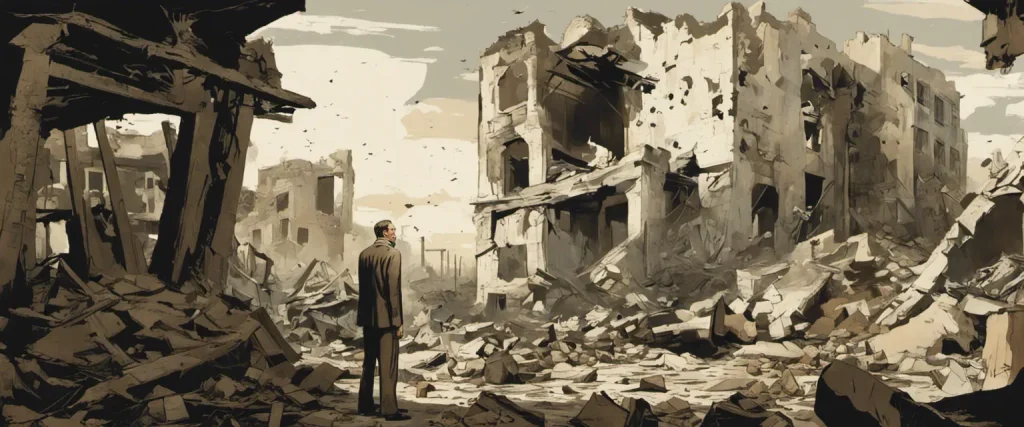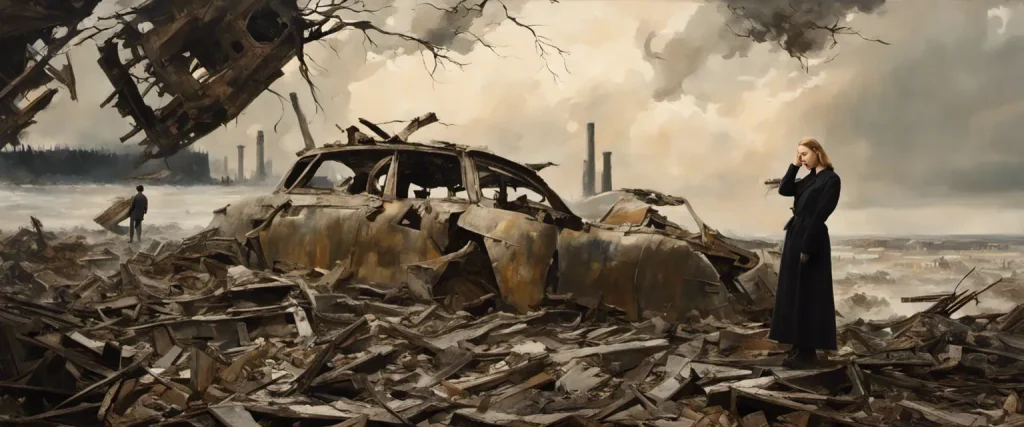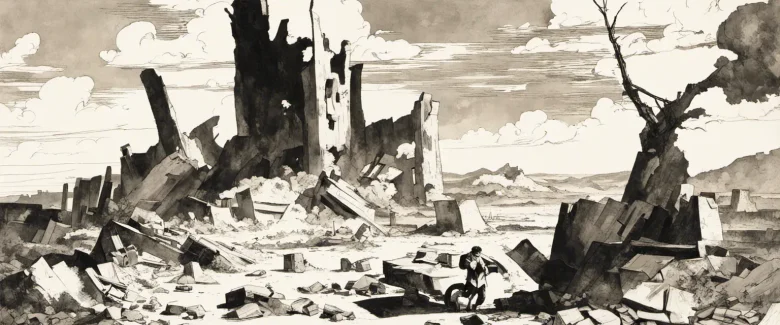In “The Rape of Nanking,” Iris Shun-Ru Chang meticulously exposes the forgotten atrocities committed during the 1937-1938 Japanese invasion of Nanking, now known as Nanjing, China. Through extensive research and survivor testimonials, Chang sheds light on the horrifyingly brutal events that unfolded during the occupation of this ancient city. Serving as both a historical account and a testament to the resilience of the human spirit, “The Rape of Nanking” uncovers a dark chapter in history that has been silenced for far too long.
Iris Shun-Ru Chang, born on March 28, 1968, was an accomplished Chinese-American writer, historian, and human rights activist. Growing up in the United States, Chang was exposed to both Chinese and American cultures, which sparked her interest in history and global affairs. Her passion for shedding light on hidden atrocities and her pursuit of justice led her to extensively study and document the atrocities of the Nanking Massacre. As an author and journalist, Chang dedicated her life to raising awareness about the forgotten victims and the immense suffering endured during this horrific event. Though tragically, a bright light went out too soon, Chang’s work in “The Rape of Nanking” remains a significant contribution to historical literature and a reminder of the importance of acknowledging the crimes of the past.
Chapter 1: Introduction to Nanking
Chapter 1: Introduction to Nanking of the book “The Rape of Nanking” by Iris Shun-Ru Chang serves as an overview of the historic context and a brief introduction to the city of Nanking before delving into the atrocities committed during the Nanking Massacre.
Chang starts by highlighting the significance of Nanking in Chinese history, describing it as the national capital of China between 1368 and 1421. She emphasizes the cultural and political importance of the city, which has grown and flourished over the centuries before becoming a symbol of national pride.
The author provides a glimpse into the events leading up to the Sino-Japanese War in 1937, when Japan initiated its invasion of China. She details the aggressive expansionist policies pursued by Japan and its intentions to establish dominance in East Asia.
Chang then sets the stage for the Nanking Massacre by describing the Japanese army’s arrival at the city’s gates on December 9, 1937. She highlights the stark contrast between the prosperous and refined city of Nanking and the impending horror that would be inflicted upon its inhabitants.
The chapter concludes with statistics and estimates of the large population of Nanking, illustrating the scale of the potential tragedy. Chang also introduces key figures in the upcoming events, including General Matsui Iwane, the commander of the Japanese expeditionary force, and John Rabe, a German businessman who would later play a crucial role in documenting and protecting Chinese civilians during the massacre.
In summary, Chapter 1 provides an overview of the historical importance of Nanking, the Japanese invasion of China, and the build-up to the Nanking Massacre. It sets the stage for readers and prepares them for the harrowing accounts of the atrocities to come in subsequent chapters.
Chapter 2: Prelude to Invasion
In Chapter 2 of “The Rape of Nanking” by Iris Chang, titled “Prelude to Invasion,” the author gives a detailed account of the events that led to the brutal Japanese invasion of the Chinese city of Nanking in December 1937.
The chapter begins by pointing out the general state of Sino-Japanese relations, where tensions were already high due to territorial disputes and Japan’s desire for expansion. The Japanese believed in their racial superiority and viewed the Chinese as inferior. The chapter describes the Japanese army’s mentality, which emphasized aggression, brutality, and a lack of regard for human life.
Chang chronicles the significant military movements leading up to the invasion, highlighting the ill-preparedness of Chinese forces and their weak defensive strategy. The Chinese army initially lacked ammunition, and their soldiers lacked proper training, further disadvantaging them against Japan’s well-equipped and disciplined troops. Chang describes the numerous massacres by Japanese forces in smaller Chinese towns leading up to Nanking, foreshadowing the atrocities that awaited the city’s residents.
The author also introduces the reader to key figures such as General Matsui Iwane, the commander of the Japanese army, and John Rabe, a German businessman and head of the International Committee of the Nanking Safety Zone, who would later play a vital role in saving countless Chinese lives during the occupation.
Chang vividly describes the anxiety and terror that gripped the people of Nanking as rumors of the impending Japanese invasion reached the city. The chapter ends with the Japanese army surrounding Nanking and the inhabitants preparing for the horrors that were about to unfold.
Overall, Chapter 2 sets the stage for the invasion of Nanking, providing historical context and building tension as it paints a picture of the impending destruction and brutality that would come to define the tragedy.
Chapter 3: The Fall of Nanking
Chapter 3 of “The Rape of Nanking” by Iris Shun-Ru Chang, titled “The Fall of Nanking,” explores the brutal invasion and occupation of Nanking (now Nanjing) by Japanese forces during the Second Sino-Japanese War, which lasted from December 13, 1937, to January 1938.
The chapter begins by describing the entry of the Japanese troops into the city, followed by their immediate assault on the city’s defenseless inhabitants, which included both soldiers and civilians. Chang details the blatant disregard that the Japanese soldiers displayed towards human life, as they embarked on a campaign of rape, arson, looting, and murder. The chapter highlights numerous eyewitness accounts that describe the horrors inflicted upon the people of Nanking, the majority of whom were innocent civilians.
As the Japanese systematically rounded up and executed thousands of Chinese prisoners of war, the city became consumed by chaos and despair. The chapter also discusses the power dynamics within the Japanese military, as some officers attempted to control their soldiers and prevent the worst atrocities. However, these efforts were often futile, as the soldiers acted with impunity, seemingly unchecked by their superiors.
In addition to recounting the gruesome acts committed during the occupation, Chang provides insights into the motivations behind the Japanese soldiers’ behavior. She suggests that a combination of factors, including their indoctrination and the perception of the Chinese as racially inferior, contributed to their barbaric actions.
Overall, Chapter 3 of “The Rape of Nanking” sheds light on the unimaginable atrocities committed during the fall of Nanking, demonstrating the scale of the violence and suffering inflicted upon the city’s residents.

Chapter 4: Massacre Begins
Chapter 4: Massacre Begins in the book “The Rape of Nanking” by Iris Shun-Ru Chang details the beginning of the violent and brutal massacre that unfolded in Nanking, China, following the Japanese invasion in December 1937.
The chapter opens with the Japanese forces taking complete control of the city, and the inhabitants, including Chinese soldiers and civilians, are left defenseless. The Japanese soldiers immediately begin carrying out their campaign of terror and violence, engaging in widespread looting, arson, and murder.
The chapter describes the horrific acts committed by the Japanese soldiers, who exhibited a complete lack of regard for human life. Chang recounts countless instances of gang rape, torture, and the indiscriminate killing of men, women, and children. The perpetrators showed no mercy to their victims, regardless of age or gender.
Chang includes firsthand accounts from survivors who witnessed and experienced the atrocities. These testimonies paint a grim picture of the massacre, with stories of families being torn apart, women being raped and mutilated, and innocent civilians being slaughtered on the streets, in their homes, or in public places.
Despite the chaos and suffering, some individuals displayed extraordinary acts of bravery and kindness. There are accounts of Chinese individuals risking their lives to save others and acts of heroism that offer glimmers of hope amid the darkness.
Chapter 4 concludes with Chang challenging the widely accepted narrative in Japan that argues the massacre was exaggerated or never occurred. She provides evidence from various sources, including photographs and accounts from foreigners, to refute these claims and reinforce the reality of the Nanking Massacre.
Overall, Chapter 4 of “The Rape of Nanking” provides a harrowing account of the initial phase of the massacre, shedding light on the horrors endured by the people of Nanking during this tragic period in history.
Chapter 5: Life Under Occupation
Chapter 5 of “The Rape of Nanking” by Iris Shun-Ru Chang focuses on life under Japanese occupation in the city of Nanking during the Winter of 1937. This chapter explores the horrendous conditions endured by the Chinese population and highlights the experiences of individuals during this period of extreme violence and suffering.
Chang begins the chapter by setting the scene of a once-prosperous city in ruins, with the streets filled with corpses and buildings burned and looted by Japanese soldiers. She describes the chaos and fear that gripped the city’s residents, who were subjected to constant brutality, rape, and murder at the hands of the Japanese forces.
The author then introduces several stories of survivors who recount their struggles to survive under the Japanese occupation. These survivors share chilling details of how they witnessed family members being tortured, women being raped, and innocent civilians killed indiscriminately. Chang highlights the atrocities committed by Japanese soldiers, including the infamous “contest” where they competed to kill as many people as possible in a set amount of time.
Additionally, the chapter sheds light on the attempts made by individuals to escape Nanking and the challenges they faced in doing so. Many Chinese tried to flee the city, but the Japanese soldiers set up numerous roadblocks, making it almost impossible to escape. Those who were caught were subjected to further abuse and often executed.
The chapter concludes by emphasizing the psychological impact the occupation had on the Chinese population. Many survivors experienced severe trauma and struggled with the lasting effects of the violence they had witnessed and endured.
In summary, Chapter 5 of “The Rape of Nanking” provides a harrowing account of the unimaginable suffering endured by the Chinese population under Japanese occupation. Chang’s meticulous research and personal testimonials bring to light the extreme brutality and inhumanity inflicted upon the people of Nanking during this dark period.
Chapter 6: International Response
Chapter 6: International Response of the book “The Rape of Nanking” by Iris Shun-Ru Chang explores the reaction of the international community to the atrocities committed during the Nanking Massacre in December 1937. This chapter focuses on the efforts made by diplomats, missionaries, and journalists to shed light on the horrific events and hold the Japanese accountable.
The chapter begins by discussing the actions of the diplomats from neutral countries, such as American diplomat John Rabe and German businessman John Magee. These individuals, along with several other diplomats who formed the International Committee for the Nanking Safety Zone, worked tirelessly to protect Chinese civilians from the Japanese soldiers. They established a safety zone in Nanking, providing refuge for thousands of Chinese citizens.
Western missionaries and journalists also played a crucial role in documenting the atrocities and reporting them to the outside world. The work of individuals like American missionary Minnie Vautrin and British journalist Harold Timperley provided crucial evidence of the atrocities committed by the Japanese soldiers in Nanking.
However, the international response to the Nanking Massacre was somewhat mixed, with some nations choosing to downplay the events or turn a blind eye. Chang highlights the divided stance of various countries, such as the United States, which still maintained its friendly relationship with Japan, and Britain, which tried to balance their diplomatic relations with Japan and their moral obligation to condemn the killings.
Despite these challenges, the international outcry regarding the Nanking Massacre eventually grew stronger. Journalists from around the world published graphic reports about the atrocities, and in 1938, the Chinese government launched the “Documentary of the Rape of Nanking” campaign, which further exposed the crimes committed by the Japanese Imperial Army.
Overall, Chapter 6 of “The Rape of Nanking” emphasizes the importance of the international response in shedding light on the Nanking Massacre and demanding justice for the victims. The efforts of diplomats, missionaries, and journalists raised awareness and created a foundation for future investigations and trials against the perpetrators of this heinous crime.

Chapter 7: The Aftermath
Chapter 7 of “The Rape of Nanking” by Iris Shun-Ru Chang, titled “The Aftermath,” focuses on the aftermath of the atrocities committed during the Nanking Massacre. This chapter delves into the broken survivors, international reactions, and the initial steps towards justice.
As the massacre finally ended, the people of Nanking were left traumatized and devastated. Thousands of survivors were emotionally and physically scarred, feeling lost and broken. Many had lost their families, witnessed brutal violence, or endured sexual abuse. Chang describes the psychological toll on the victims, who faced survivor’s guilt and struggled to reintegrate into society. Additionally, the survivors faced the challenges of finding shelter, healthcare, and rebuilding their lives.
Internationally, the news of the Nanking Massacre slowly began to spread, due to eyewitness accounts, articles, and photographs. The chapter highlights the role of individuals like George Fitch and Harold John Timperley, as well as organizations such as the International Committee for the Nanking Safety Zone, in documenting and disseminating the evidence of the horrors that took place.
Furthermore, Chang explains how the international response varied. Some countries, like America, condemned the atrocities and attempted to bring aid to Nanking by establishing committees and campaigns. However, other nations, such as Japan and Western powers, were skeptical or dismissive of the reports, preferring to maintain positive relations with the Japanese government.
This chapter also discusses the initial steps towards justice. The International Military Tribunal for the Far East, held in Tokyo in 1946, heard evidence of war crimes committed during the Second Sino-Japanese War, including the Nanking Massacre. However, due to various political factors, only a small number of perpetrators were ever brought to justice.
In summary, Chapter 7 of “The Rape of Nanking” explores the aftermath of the Nanking Massacre, focusing on the physical, psychological, and emotional impact on survivors, the international reactions to the atrocities, and the early attempts at seeking justice for the victims.
Chapter 8: Legacy and Lessons
Chapter 8 of “The Rape of Nanking” by Iris Shun-Ru Chang, titled “Legacy and Lessons,” delves into the aftermath of the Nanking Massacre and the impact it left on both the Chinese and Japanese societies.
The chapter begins by discussing the attempts by the Japanese government to cover up the atrocities committed during the Rape of Nanking. Chang notes that the Japanese authorities engaged in a systematic effort to destroy evidence, intimidate witnesses, and deny the occurrence of the massacre altogether. However, she highlights the significance of testimonies from survivors and the few Japanese individuals who spoke out against the brutality, shedding light on the truth and refusing to let history be forgotten.
Chang further explores the psychological and societal consequences of the Nanking Massacre on the Chinese people. She emphasizes that the traumatic experiences during the invasion left lasting scars, not only physically but also emotionally and mentally. Survivors faced the challenge of reintegrating into society and coping with the memories of the horrors they had witnessed. Additionally, the Chinese government’s reluctance to acknowledge and address the massacre delayed the healing process for the victims.
The chapter also examines the long-standing impact of the Rape of Nanking on Japan. Chang highlights how education and historical documentation in Japan have largely glossed over or downplayed the event, perpetuating a distorted version of history. She emphasizes the need for Japan to confront its own wartime atrocities and accept responsibility for the actions of its past to prevent similar atrocities from happening in the future.
In conclusion, Chapter 8 of “The Rape of Nanking” underscores the ongoing struggle for acknowledgment and justice regarding the Nanking Massacre. The chapter highlights the importance of remembering and learning from history, urging both Chinese and Japanese societies to confront the past honestly and ensure that the lessons of the Nanking Massacre are not forgotten.
After Reading
In conclusion, Iris Shun-Ru Chang’s book, The Rape of Nanking, sheds a horrifying light on the atrocities committed during the Japanese invasion of Nanking in 1937. Through extensive research, survivor testimonies, and historical documentation, Chang unearths the brutal realities of war and the depths of human suffering. She meticulously presents the accounts of mass murders, rapes, and tortures inflicted upon innocent civilians, leaving readers both shocked and enraged. With a powerful narrative, The Rape of Nanking serves as a grim reminder of the importance of remembering and acknowledging the darkest chapters of history to work towards peace and justice.
1. Guns, Germs, and Steel: The Fates of Human Societies” by Jared Diamond
Jared Diamond explores the interconnectedness of geography, biology, and culture to unravel the mysteries behind the rise of civilizations. This thought-provoking book delves into the crucial factors that shaped the world we live in today, offering a comprehensive perspective on human history.
2. Sapiens: A Brief History of Humankind” by Yuval Noah Harari
In this enlightening book, Yuval Noah Harari takes readers on a journey through time, exploring the development of our species from insignificant apes to the dominant force on Earth. With captivating storytelling and insightful analysis, Harari challenges our preconceptions about human existence and instills a deeper understanding of our shared history.
3. Salt: A World History” by Mark Kurlansky
Mark Kurlansky skillfully uncovers the profound impact that a simple mineral—salt—has had on human civilization. From ancient civilizations’ use of salt as currency to its role in facilitating trade routes and preserving food, Kurlansky brings to life the importance of this ubiquitous substance throughout history.
4. The Emperor of All Maladies: A Biography of Cancer” by Siddhartha Mukherjee
Delving into the complex world of cancer, Siddhartha Mukherjee offers a comprehensive and captivating account of this devastating disease. Blending scientific research with personal anecdotes, this book explores the evolution of cancer treatment, shedding light on its historical, social, and emotional impact.
5. The Innovators: How a Group of Hackers, Geniuses, and Geeks Created the Digital Revolution” by Walter Isaacson
Walter Isaacson chronicles the riveting history of the digital age by spotlighting the individuals whose innovative ideas paved the way for remarkable advancements. From pioneers like Ada Lovelace and Alan Turing to modern tech visionaries like Bill Gates and Steve Jobs, this book delivers an engaging narrative that celebrates the collaborative spirit of invention.



